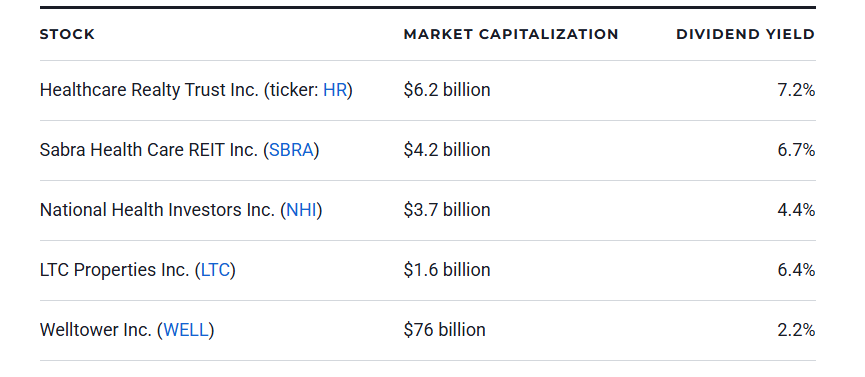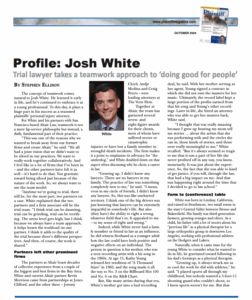California’s population is aging rapidly, creating an urgent need to prioritize the prosecution of elder abuse cases. But elder abuse litigation is not for the faint of heart—the facts are often harrowing, and the legal journey is demanding for both clients and counsel.
To better advocate for this vulnerable population, it’s critical to make informed decisions at the earliest stages of a case. Before filing a complaint, practitioners must evaluate key issues that arise from the unique challenges in this area of law. Once litigation begins, discovery can be exceptionally complex—ranging from the difficulty of obtaining critical evidence to parsing an overwhelming volume (or complete absence) of records. Early, in-depth investigation is essential to withstand the long haul and position the case for success.
What Happened?
Elder abuse often manifests in multiple forms within a single case. Acknowledging this, the California Legislature enacted the Elder Abuse and Dependent Adult Civil Protection Act in 1982. The Act defines abuse broadly, including:
- “Physical abuse, neglect, financial abuse, abandonment, isolation, abduction, or other treatment resulting in physical harm or pain or mental suffering,” and
- “The deprivation by a care custodian of goods or services that are necessary to avoid physical harm or mental suffering.”
(Welf. & Inst. Code, §§ 15610.07(a)-(b))
A case involving both sexual assault and physical abuse may stem from systemic understaffing—indicating neglect or abandonment. Mismanagement of funds may point to financial abuse. It’s therefore critical to go beyond the surface and uncover all potential layers of wrongdoing.
The Elder Abuse Act also offers enhanced remedies, including recovery of attorneys’ fees, costs, and punitive damages. However, these benefits come with added burdens: plaintiffs must meet a higher evidentiary standard—clear and convincing evidence—and prove the defendant acted with recklessness, oppression, fraud, or malice. (Welf. & Inst. Code § 15657; Samantha B. v. Aurora Vista Del Mar, LLC (2022) 77 Cal.App.5th 85.)
Where Did It Happen?
Elder abuse frequently occurs where victims should feel safest: in their homes or care facilities. These may include:
- Private homes
- Skilled Nursing Facilities (SNFs)
- Residential Care Facilities for the Elderly (RCFEs) as defined by Welf. & Inst. Code § 1569.2
Understanding the setting is vital. SNFs are licensed to provide qualified medical care, while RCFEs are not. This distinction informs what services were legally permissible and what duties may have been breached.
Location also impacts the identification of defendants. Abuse in private homes may have a more straightforward chain of liability, whereas institutional abuse is often obscured by complex corporate structures. Large SNFs and RCFEs are frequently operated through shell entities and backed by Real Estate Investment Trusts (REITs). In 2024, U.S. News & World Report listed the top five REITs in healthcare—highlighting the vast corporate reach behind elder care facilities.

Understanding the setting helps anticipate discovery challenges and better identify who the actual defendants are.
Who Are the Defendants?
Early investigation is critical for identifying all responsible parties—especially those hidden behind contracts and corporate veils. Consider the following during pre-suit research:
- Who are the parties to the residential care services agreement?
- Which individuals or entities signed the contract?
- Is there an arbitration clause? Who does it bind?
- Who receives and processes payments?
- Who communicates with the resident or family?
- Are there “clickwrap” terms from online portals that may include binding agreements?
- Are third-party staffing or security agencies involved?
- Do caregivers wear branded uniforms indicating employment?
- Who was present during the incident?
- Were law enforcement or the ombudsman notified?
- Who are the assigned caregivers and supervisors?
- What does the facility license reveal about administrators and licensees?
- What do Secretary of State filings say about corporate structure?
For smaller facilities, reviews on platforms like Yelp, Facebook, and Google can offer useful insights.
Records should be obtained through California Public Records Act requests—submitted to the California Department of Social Services (CDSS) and Community Care Licensing Division (CCLD). Also request reports from local law enforcement and ombudsman offices. While pre-suit records may be redacted, unredacted versions can typically be obtained via subpoena after filing the complaint.
How Early Investigation Helps
Much of this information is publicly available or accessible pre-suit. Investing time and resources in early analysis pays dividends by:
- Streamlining the complaint drafting process
- Tailoring discovery to specific facts and avoiding overbroad, boilerplate requests
- Minimizing objections such as “overbroad,” “unduly burdensome,” or “fishing expedition”
Early factual development also sharpens your case theme—an essential element in persuasion. Was your client ignored due to systemic understaffing? Was profit prioritized over patient safety? Without early groundwork, these narratives may remain undiscovered and underdeveloped.
The Road Ahead
By 2030, the California Department of Aging estimates that one-quarter of California’s population will be over 65—surpassing the number of residents under 18 for the first time. Protecting our aging population has never been more critical. That protection must include rigorous, proactive investigation into abuse and neglect in residential care settings.
Early preparation isn’t just strategic—it’s a moral imperative.


